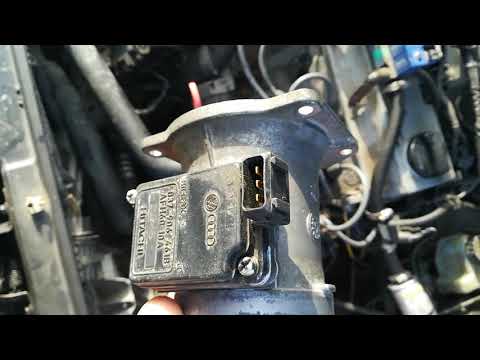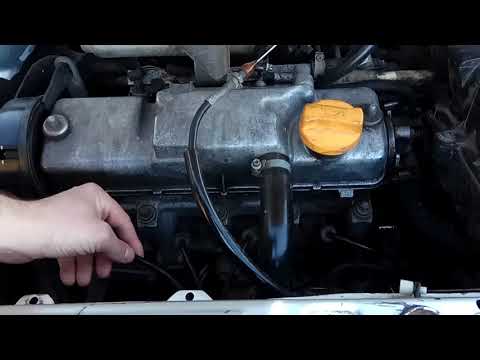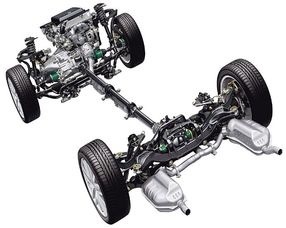
the car jerks on the go
Jerks of the car when driving in most cases are a sign malfunctions in the power system ICE, ignition or transmission. Before continuing to operate in such a situation, it is better to find out why the car starts to twitch on the go. Some breakdowns that cause these symptoms may be a safety hazard or cause more serious damage..
In this article, we will talk about what to do if the car twitches on the go, how to find the culprit of the problem and fix the breakdown.
Reasons why the car may twitch while driving
This section lists all the most common reasons why the car troits and twitches while driving. For convenience, potential breakdowns are divided depending on the fuel used and the mixture formation system. This will allow you to quickly determine why a car with a carburetor, injector, diesel engine, equipped with LPG twitches while driving, or at least eliminate possible problems.
Why the car twitches on the go: reasons for different types of internal combustion engines
| Causes | Why does it twitch on the go | |||
|---|---|---|---|---|
| Injector | Carburetor | On gas | Diesel | |
| broken or clogged carburetor | ✘ | ✔ | ✘ | ✘ |
| Clogged air or fuel filter | ✔ | ✔ | ✔ | ✔ |
| Clogged gas filter | ✘ | ✘ | ✔ | ✘ |
| Clogged or worn nozzles | ✔ | ✘ | ✔ | ✔ |
| Problems with spark plugs, coils or BB wires | ✔ | ✔ | ✔ | ✘ |
| Air leaks into the intake manifold | ✔ | ✔ | ✔ | ✔ |
| breakdown of TPS (throttle position sensor) or throttle drive *** | ✔ | ✘ | ✔ | ✘ |
| breakdown of sensors: accelerator, IAC (idle speed control), MAF (mass air flow sensor), DTOZH (coolant temperature sensor), MAP (absolute pressure sensor) | ✔ | ✘ | ✔ | ✔* |
| breakage or poor contact of the DPKV (crankshaft sensor) | ✔ | /✔**** | ✔ | ✔* |
| fuel pump failure | ✔ | ✔ | ✘ | ✘ |
| failure of high pressure fuel pump (high pressure fuel pump) | /✔** | ✘ | /✔** | ✔ |
| Faulty gas reducer | ✘ | ✘ | 🇧🇷** | ✘ |
| Freezing of the gearbox or lines | ✘ | ✘ | ✔ | ✘ |
| Worn or incorrectly adjusted clutch | ✔ | ✔ | ✔ | ✔ |
| Incorrect operation of the checkpoint | ✔ | ✔ | ✔ | ✔ |
| Depreciation of the CPG, breakdown of valves and hydraulic compensators | ✔ | ✔ | ✔ | ✔ |
| Poor quality or unsuitable fuel | ✔ | ✔ | ✔ | ✔ |
* relevant only for diesel internal combustion engines with a common rail injection system and similar ** relevant only for cars with direct injection and for 6th generation LPG systems for them, injecting liquid gas *** relevant for injection cars with an electronic pedal (e-gas) * *** relevant for carburetor cars with an electronic (contactless, microprocessor) ignition system
It is possible to find out why a car with a carburetor is twitching on the go only by inspecting and checking potential locations for the problem.

The main reasons why the car twitches while driving: video
In cars running on gas or diesel fuel, a lot depends on the generation and features of the supply system.
In addition to the type of fuel and power system, the problem of breakdown depends on the conditions under which the car starts to twitch:
- when driving at low speeds forward;
- when moving backward;
- when picking up speed;
- while moving at a constant speed.
Why does the car jerk when driving in different modes
Some breakdowns that cause jerks appear only in certain driving modes, these include:
- Clogged or worn nozzles. Nozzles (on the injector, HBO 4+ generation and diesel) incorrectly spray fuel, which leads to a deterioration in the ignition of fuel assemblies, due to which the internal combustion engine is unstable and loses traction. To eliminate the breakdown, you need to flush the nozzles or replace them.
- Carburetor blockage. Due to clogged jets, mixture formation is disturbed. To fix the problem, you need to flush the carburetor and flush the fuel line.
- Clogged fuel filters. Clogging of gasoline, diesel or gas filters leads to a decrease in the throughput of the fuel line. Troubleshooting - replacing the fuel filter.
New and broken crankshaft position sensor
Throttle position sensor fails when the contacts are erased
Checking the coolant sensor with a multimeter
- fuel pump failure. Reducing the performance of the fuel pump leads to interruptions in the supply of fuel. The problem usually progresses as the load progresses: at idle it is weakly expressed, and when accelerating, the engine frankly twitches and stalls. To check the pump on an injection car, you need to measure the pressure in the fuel rail with a pressure gauge, on the carburetor - after the pump, on a diesel engine - at the outlet of the injection pump.
- breakage of DPKV. The crankshaft sensor determines the moment at which fuel (and a spark - on gasoline / gas) must be supplied. It rarely fails itself, but if there are problems with the wiring, the signal is lost, the engine stalls, but it starts up by inertia, which causes jerks and shaking.
- breakdown of DTOZH. Modern internal combustion engines with an injection system (both gasoline / gas and common rail diesel) adjust the fuel supply and ignition, focusing on the temperature of the engine. If the DTOZH is faulty, then the injection dose, ignition angles (gasoline, gas) or injection timing (diesel) will not correspond to real conditions, due to which the engine starts to work unstably, loses power. DTOZH is checked by computer diagnostics or a multimeter (you need to find a temperature resistance correspondence table).

TPS sensor diagnostics: video
- failure of TPS or accelerator sensor. If the throttle or gas pedal position sensor is worn out (usually the potentiometer tracks are erased), the signal begins to “float”, which causes incorrect remote control. To check the sensor, you need to measure the change in its voltage as you gently press the gas pedal (through diagnostics or with a multimeter). If there are sharp jumps or dips in voltage, you need to change the throttle or pedal sensor.
- Ignition problems. If the spark plugs, their coils or wires are worn out, misfiring occurs. In the early stages, the problem can only manifest itself at idle, since at high speeds these gaps are partially compensated by inertia forces and are masked. For diagnostics, you need to inspect candles, coils, wires for breakdowns (sparks in the dark). It is necessary to check the candles, wires, coils, and after finding the culprit, replace the faulty elements.
- Air leaks. In the presence of undesirable air leakage, the motor cannot dose fuel assemblies normally, the mixture becomes poor, traction is lost and jerks appear. On carburetor engines with vacuum ignition control (and carburetor control, as, for example, on old Mercedes), the UOZ and the supply of gasoline are also disturbed. To find a leak, you need to check the intake with a smoke generator. The main areas where air can poison are pipes and their clamps, flanges of the carburetor, throttle, manifold, receiver, nozzle seals.
- Off-season fuel. The problem is typical for diesels and for gas. Summer diesel fuel paraffinizes in winter, clogs the lines, so the engine either does not start at all, or starts with difficulty and works poorly. The summer propane-butane mixture (with a predominance of butanes) behaves similarly in winter, which does not evaporate well in frost. To fix the problem, you need to defrost diesel fuel and refuel according to the season. It is more difficult with gas, because for refueling, you must first drain part of the gas, observing safety precautions (it is better to visit a gas service station).
- Bad fuel. If gasoline, gas or diesel is counterfeit, low quality, or the octane / cetane number is not correct, the fuel ignites and burns worse. Driving on such fuel is fraught with malfunctions in the internal combustion engine, exhaust system, so you need to drain it, flush the fuel system and refuel with high-quality fuel.
Checking the MAF sensor with a multimeter
The absolute pressure sensor needs periodic cleaning
- DBP breakdown. In case of incorrect operation of the absolute pressure sensor used in gasoline engines without DMRV and on 4th generation HBO, the composition of the air-fuel mixture is disturbed. It is necessary to check the DBP, and if it is faulty, replace it.
- DMRV breakdown. A defective mass air flow sensor provides incorrect data on the amount of air entering the intake manifold, due to which the ECU does not dose fuel correctly. You can check the DMRV by measuring its voltage (with a multimeter or through diagnostics) in idle time. For example, for injector VAZs, a voltage of less than 1 V indicates an ideal state of the flow meter, from 1 to 1,02 - about normal, from 1,03 to 1,05 - about signs of wear, and more than 1,05 V - about critical wear.
- Depreciation of the CPG, breakdown of valves and hydraulic compensators. If the engine is badly worn out, the valves are burnt out or unevenly set, the compression drops. As a result, the reason why the car twitches at idle is weak and uneven pressure in different cylinders. The moments of force created by the pistons differ from each other, and shaking appears from this. To check, you need to measure the pressure in the cylinders, it should differ between the "boilers" by no more than 1 atm. incorrectly set gaps must be adjusted, faulty hydraulic lifters must be replaced. Burnt valves and pistons will have to be changed by removing the head, and if the cylinders are worn out, the entire internal combustion engine will be overhauled.
Below we will consider in detail the reasons why the car twitches on the go, why there is shaking at idle, and what can cause jerks during slow motion.
Why does the car twitch at idle
If the car jerks when idling, but behaves normally when you press the pedal, problems with the fuel supply system can be ruled out. They usually appear just when more fuel is needed. The most common malfunctions that cause jerks in the twentieth are:

the car twitches at idle, finding and solving the problem: video
- IAC breakdown. On injector cars, air intake with a closed throttle is carried out through a bypass channel (bypass), the throughput of which is regulated by the idle speed controller. If it is faulty or the channel is clogged, the air will not be supplied correctly, the motor will start to twitch and troit. If the car twitches at idle due to the IAC, to fix the problem, you need to replace it.
- Incorrect XX setting on the carburetor. On the carburetor, idling is regulated by screws for the quantity and quality of the mixture, with an incorrect position of which the motor can trim. You can fix the problem by adjusting the position of the screws.
- Clogged jet XX. In addition to screw adjustment, the supply of fuel assemblies at idle is regulated by a separate jet, when clogged, fuel is supplied in insufficient quantities. To fix the problem, you need to clean the jet, and preferably the entire carburetor.
- Incorrect gear setting. In HBO systems up to the 3rd generation, the idle speed is adjusted with a separate screw that regulates the gas supply bypassing the membrane. If it is not in the correct position, the gas dosage will be violated. To fix the problem, you need to adjust the fuel until the engine stabilizes.
- Early gas start. On motors with HBO that have auto-switching fuel (by engine speed or temperature sensor), shaking and tripping at the idle may be the result of switching to gas before the gearbox warms up. In such cases, the lines or the gearbox itself freeze up, the gas supply slows down, the motor "starves". To avoid tripling, you need to switch to HBO when the engine temperature reaches + 40-50 degrees or more. On HBO of the 2nd and 3rd generations, in order to avoid an early transition and freezing, it is not worth revving strongly until the internal combustion engine warms up, and on 4th and 5th generations, you need to check and, if necessary, adjust the temperature in the HBO controller.
If there are no problems at idle, but the car twitches on the go, the following sections will help to understand what is the reason.
Car jerks when driving at low speeds
If the car jerks off or the car starts to twitch at low speeds on the go, the reasons may be as follows:
What is the reason when the car twitches in motion at low speeds: video
- Wear of drive joints. If the car twitches at the start of movement, the cause may be the wear of the CV joints, if accompanied by a characteristic crunch, or the breakdown of the universal joint crosses. Excessive hinge play generates shock loads in the transmission, which is why a jerk occurs. You can check the parts for play by driving the car into a pit or lift and turning the drive shafts or cardan manually.
- Throttle blockage. A dirty throttle at a small opening does not allow enough air to pass through, due to which the mixture is dosed incorrectly, the engine runs worse and the car twitches when driving at low speeds. The damper is checked visually, and if there are deposits, it must be washed with a cleaner for carburetors and throttle valves.
- Incorrect HBO setting. incorrectly adjusted gas-balloon equipment (for example, a tightened membrane on HBO-2) may not top up or pour fuel at low speed. correct diagnostics of HBO 4th generation and newer - computer, older systems - gas analysis using SDC.
- Problems with automatic transmission. If the torque converter box kicks and the car twitches at low speed, you need to diagnose the gearbox and its torque converter (“donut”). Most often, the cause lies in the lack of oil pressure caused by low lubrication levels or pump wear. First you need to measure the oil level, assess its condition. If the lubrication is in order, disassembly and troubleshooting of the box will be required.
- Clutch slip. When driving "in tightness" on a car with manual transmission and manual transmission, a worn or overtightened clutch is overloaded. If at some point it becomes easier for the motor to turn the disk than the wheels, a jerk appears. You can check the clutch by sharp acceleration. In addition, its slippage is usually accompanied by the characteristic smell of a burnt clutch.
- Throttle actuator defective. On cars with an E-gas system, the throttle valve is controlled by the ECU using an electric drive, the breakdown of which leads to insufficient opening of it. You can check the throttle assembly visually, evaluating its opening depending on the position of the gas pedal.
- Wedged brakes. If the brake pads seize the discs (due to blockages in the circuit, pinched tubes, skewed caliper guides and other problems), the motor has to overcome additional resistance. That is the reason for the jerks. Usually, the problem is accompanied by a deterioration in the braking properties of the car (increased braking distance) and overheating of the discs / drums with pads. Since the discs and pads warm up at speed, inertia builds up - the jerks go away, but the car slows down worse.
When driving in reverse, the car twitches
If the car jerks when reverse gear is engaged, this is mainly due to gearbox problems, and four basic reasons can be distinguished from them:
Characteristic wear of the reverse gear in the manual transmission
- Automatic transmission overheating. In an overheated gearbox, the oil loses viscosity, becomes thinner, which disrupts the operation of the gearbox. Reverse speed suffers from this one of the first.
- Lack of automatic transmission oil. If the oil level in the box is insufficient, jerks are also possible when the rear is turned on.
- automatic transmission breakdown. breakdowns and blockages of the valve body, solenoids, oil pump or clutches cause jerks when reversing. It is possible to identify breakdowns during troubleshooting, since without disassembly “by eye” it is almost impossible to find the cause.
- Reverse gear wear. The reverse gear of most manual transmissions is unsynchronized, therefore, with frequent use, it wears out much faster than the front ones. In spur pairs, the teeth are erased (just like on the starter crown), because of which the gears can slip and the car twitches when reversing.
Car jerks while driving while picking up speed
When accelerating, the car twitches mainly for the following reasons:
- Wiring problems. During hard acceleration, the motor deviates (especially if the pads are worn), which can cause contacts to move away from sensors and other electrical components. On the injector, it is necessary to carry out diagnostics and clean the contacts, eliminate breaks or short circuits, and change damaged connectors.
- Clogged air or fuel filter. If the filters are slightly clogged, the lack of air or fuel manifests itself only under load and at high speeds.
Connecting a pressure gauge to the fuel rail to measure the pressure in the fuel system
- Fuel pump problems. Lack of fuel pressure is a common reason why the car twitches when you press the gas. With a slight wear of the fuel pump or high pressure fuel pump, it is also able to develop the required fuel supply pressure at low gas, but it cannot cope under load, the motor “starves” and cannot develop the design power. The pumps are checked by measuring the pressure.
- Blockage or breakage of the second chamber of the carburetor. The second chamber of the carburetor is usually responsible for powering the motor under load. If it is clogged, incorrectly adjusted or defective (for example, a wedge or a broken throttle rod), it cannot supply gasoline vapors in the right amount.
- “Strangled” or incorrectly selected HBO. incorrectly tuned HBO (often inexperienced drivers and tuners do this to save gas) or an insufficiently productive gearbox (for example, a 140 hp gearbox on a 120–130 hp engine) behaves in the same way as an incorrectly working carburetor or injector. At peak loads, there is not enough gas, which is why the car twitches when driving when picking up speed. Systems of the 4th generation and newer are diagnosed by a computer method, older ones - by adjusting by ear or (which is better) gas analysis with SDC.
How to find the cause and what to produce
Autoscanner Rokodil ScanX Pro
On a car with an injector, you need to find out why the car starts to twitch on the go by diagnosing and reading errors. If there is a BC that displays their codes, no additional equipment is needed, otherwise an OBD II scanner and software for it are needed. You can do without additional gadgets and programs, which are also often paid, if you buy a portable autoscanner, for example, Rokodil ScanX Pro. Such a device makes it possible to read errors and decipher them, view the readings of various sensors, and record data in real time. Common error codes indicate problems with such nodes:

Diagnosis why the car is twitching: video
- P0100-0104 – DMRV;
- P0105-0109 - MBP;
- P0110-0114 - intake air temperature sensor;
- P0115-0119, P0125-0126 - coolant temperature sensor;
- P0120-0126, P0220-0229 – DPDZ;
- P0200-0215, P0251-0296 – injectors;
- P0218 - gearbox overheating;
- P0230-0233 - fuel pump;
- P0335, P0336-0339 – DPKV;
- P0350-0362 - ignition coils, wiring, or control unit.
Without computer diagnostics, it will be necessary to check why the car began to twitch on the go by examining the nodes one by one. The general sequence of actions is shown below.
Finding the cause of car jerks while driving
in order to find out in the field the reason why the car twitches on the go, you need to act in this order:

Reasons when the car twitches in motion, ignition diagnostics: video
- Check intake. Remove the air filter from the carburetor or disconnect the nozzle from the throttle and inspect the damper. If there are deposits, you can wipe it with a damp cloth, then collect everything and check if the problem has gone away.
- Ignition Diagnostics. Check for spark breakdown through wires or lugs, accompanied by characteristic clicks. At twilight and at night, the "correct radiance" is visible to the naked eye. For accurate diagnosis, you should check the coils, make sure there is a spark. To do this, unscrew and inspect the candles. If soot is found, you should try to remove it without damaging the candles. On carburetor engines, you also need to inspect the distributor, check whether its contacts have been erased / burned.
- Oil level gauge. On a car with automatic transmission, you need to check the oil level in the box, since its lack often causes the gearbox to work incorrectly and the car starts to twitch.
- Search for suction. To search for suction in the field, you need a cigarette. it is also better if you have a plastic bottle and a tire compressor on hand. Of these, you can quickly assemble a smoke generator and blow it into the intake in order to find a place for suction.
- Electronics check. If all the previous points did not reveal any problems, but the car twitches on the go, you will need a multimeter. With it, you need to check the wiring of the sensors for breaks, short circuits. Short circuits are detected in the continuity mode, breaks and poor contact are detected by measuring the resistance of the wire from different ends (for example, at the sensor and at the mounting block or computer). You should also measure the sensor signal data and compare it with the normal ones for your car model.
The most difficult thing is to check the fuel supply system. If there are transparent filters (as on carburetor models), you can visually assess the supply of gasoline, but without equipment, pressure measurements will not work. The same goes for injectors.
You can carefully move on your own to the place of repair, observing the precautions, in case of the following malfunctions:
in order not to harm the motor more, it is better to use a tow truck
- a small deficit in fuel pressure (driving without sudden accelerations);
- problems with sensors, except for DPKV (ECU turns on emergency mode and works according to a special algorithm);
- problems with HBO (we switch to gasoline and drive on it);
- slight slippage of the clutch (drive without sharp accelerations and braking of the engine).
Most of the other problems either simply do not allow you to move normally, even at a quiet pace, or dangerous for the motor. For example, an automatic transmission quickly fails with an oil shortage, a noticeable air leak is fraught with overheating of the valves, misfiring on injection engines accelerates catalyst wear, and can cause intake pops and other problems. Therefore, in order not to aggravate the problem, it is better to get to the service by tow truck or in tow (for a car with automatic transmission, no further than 50 km).

